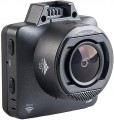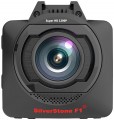HD (720)
The maximum resolution and frame rate of video recorded by the recorder in the
HD (720p) standard.
The classic resolution for this standard is 1280x720, but there are other options in DVRs — in particular, 1280x960 (4:3 aspect ratio). Anyway, HD is not outstanding, but quite a decent indicator that allows you to get a video with good detail (for example, it is usually quite possible to make out numbers on cars in close proximity to a car on it).
As for the frame rate, the
higher it is, the smoother and less blurry the video will be, the better the details on moving objects will be visible, and also the more space the footage will take up. It is worth noting here that in some inexpensive models, shooting in HD at very low speeds — 15 – 20 fps is used to reduce the cost. Such a shooting speed allows you to watch video more or less normally, but for a normal display of moving objects, a higher frame rate is still desirable — at least 25 frames / sec. It is also worth saying that, in general, for a comfortable perception by a person, a speed of 24 to 60 frames per second is considered quite sufficient, however, among the registrars there are models that can shoot HD at 120 fps. The meaning of this speed is to ensure that individual details on moving objects are as clearly visible as possible in slow motion or frame-by-frame viewing.
Functions
—
Radar detector. A sensor that reacts to the radiation of a police radar and warns the driver that the speed of movement can be recorded by the device. DVRs with this function are classified into a separate category - combo devices (see “Type”). Let us remind you that radar detectors are also available as separate devices, but the combo device takes up less space when installed. On the other hand, the “anti-radar” functionality in combined video recorders is generally somewhat more modest than in separately made radar detectors. And combo devices are quite expensive (although, most often, they are cheaper than a pair of a separate recorder and a radar detector with similar capabilities). We would like to emphasize that the presence of this function does not relieve you of the obligation to adhere to the speed prescribed by the traffic rules.
—
Signature recognition. A function of the radar detector described above that improves recognition accuracy and reduces the likelihood of false alarms. To do this, samples (signatures) of emissions from the most popular radar models are entered into the device’s memory, and when a signal is detected, the device compares it with the data in memory. In this way, you can quite accurately determine whether the received signal is the radiation of a radar (and which one), or whether it is just extraneous interference. The disadvantages of detectors with signature r
...ecognition are quite high cost, slightly increased response time and the inability to “recognize” radars that are not stored in memory (however, some models allow updating the signature database).
— Parking mode. A special mode that allows you to record emergency incidents on video while the car is parked; The G-sensor is used for operation (see “Shooting functions”). In parking mode, the recorder is in “sleep” mode, and if the G-sensor detects an impact, full recording starts. In this case, the video from the buffer is “glued” to the beginning of the recording, which allows you to record not only the moment of the incident itself, but also a few seconds before it.
— Motion sensor. Recorder function based on motion detection in the camera lens. Thus, if the recorder “understands” that there is movement in the frame, automatic shooting is carried out. This allows you to configure the DVR to automatically turn on when you start driving, as well as record possible accidents, thefts, and car thefts from parking lots that come into the field of view of your device.
— Voice control. Ability to control the DVR using voice commands. The specific list of such commands (and supported languages) may vary depending on the model. However, in any case, this function contributes to traffic safety: it allows you to keep your hands off the steering wheel and not be distracted from the road when operating the recorder.
— Gesture control. Ability to control the device using gestures. Note that the capabilities of such control in DVRs are very limited: as a rule, a sensor is used for this, which responds to the movement of the user’s hand in front of the device and is capable of performing only one specific action. However, even this feature provides additional convenience and safety (compared to pressing buttons and especially working with menus): moving your hand takes a split second, while the driver is practically not distracted from the road. As for specific functions implemented through gesture control, they may include protecting the recorded video from being overwritten, saving a photo, turning off the sound signal from the radar detector (see above), etc. In some models, such a function is hard-coded in the settings and cannot be reconfigured; in others it is possible to choose one of several options.
— Wi-Fi module. Wi-Fi technology is mainly known as a way to access the Internet wirelessly, but it can also be used to communicate directly with another device. The methods of using this technology in recorders may be different, depending on the functionality. For example, some models are capable of updating map marks for a GPS navigator and a GPS informer database via such a communication (see above); others allow you to upload the captured video directly to the Internet (for example, YouTube); and the most advanced devices with this function have touch screens and, when removed from the mount, can even be used as full-fledged tablets, with the ability to view web pages and install various applications. There are also quite specific possibilities - for example, broadcasting filmed or filmed video to a smartphone or tablet, distributing mobile Internet to other devices (if there is a 3G/4G module), etc. Note that the number of public Wi-Fi access points is constantly increasing, they are available at most large gas stations and are often provided in certain areas of large cities (parks, historical and business districts, etc.). So, accessing the World Wide Web from the recorder without removing it from the car may turn out to be much easier than it looks at first glance.
— 3G/4G modem. 3G or 4G mobile communication module. Designed mainly for data transfer - in other words, for using the mobile Internet; Voice calls for DVRs are considered overkill and are generally not supported. The communication speed in modern mobile networks is often comparable to a communication via Wi-Fi; so the options for using 3G/4G connectivity can be quite varied, depending on the specific model. However, three functions are most often encountered: downloading information about traffic jams and other relevant data (updates for the GPS informer, weather forecast, etc.); work as a GPS tracker (if this function is available - see above); as well as Wi-Fi access point mode, with mobile Internet distribution to other devices (if you have your own Wi-Fi module, of course). If we compare 3G/4G and Wi-Fi, then mobile communications are available almost everywhere, but you have to pay for using it.
— Bluetooth. The recorder has a built-in Bluetooth module. This technology is used for direct wireless communication with other devices; its application may vary depending on the functionality of a particular registrar. One of the most popular options is to broadcast sound to a Bluetooth-enabled radio or to the driver’s headset: these can be various notifications from a navigator, radar detector, etc., signals from the Antison system (see above), and in some models - even music from the built-in player. Another popular application format is exchanging files with a smartphone, laptop or other similar device (primarily copying footage). In addition, other, more specific ways of using Bluetooth may be envisaged. And here it is worth noting that most recorders with this function work on Android (see the corresponding paragraph), so the range of options in them is very extensive - in fact, it is limited to the range of compatible applications.
- Speaker. Own speaker installed in the DVR body. Through such a speaker, for example, audio can be played when watching a captured video, voice prompts from a GPS navigator/informant, signals from a radar detector (see above), etc. However, it is worth considering that the sound power can be quite low, and in a noisy environment it may be difficult to listen to the speaker.Battery capacity
The capacity of the device's own battery (see "Power source").
The general purpose of the battery depends primarily on this indicator. If the recorder uses a relatively modest battery, up to 500 mAh, this most often means that it plays the role of a backup power supply in case of disconnection from the cigarette lighter (for example, in an accident when the on-board mains fails). In such cases, you can not pay special attention to the capacity - it is usually guaranteed to last at least a few minutes of autonomous recording, and for continuous operation, the device will still have to be connected to the cigarette lighter. But for full (not "spare") power, much more capacious batteries are required - at least 800 mAh, and ideally 1000 mAh and higher. The exception is ultra-compact motorcycle models that do not have screens and do not consume much energy - for them, 200 mAh or even less is sometimes enough.
It should be noted that, theoretically, a more capacious battery allows the device to work longer without recharging. However, in practice, comparing different models by this indicator essentially makes no sense: after all, the autonomy of the recorder also depends on its energy consumption, and it is determined by a number of characteristics. Moreover, manufacturers sometimes select batteries of different capacities for different models precisely with the calculation to achieve more or less the same operating time on a charge.

